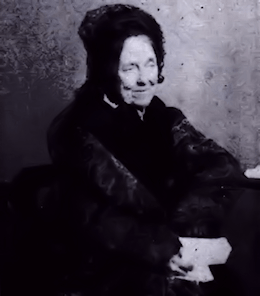Textus Receptus Bibles
Julia E. Smith Translation 1876
| 1:1 | paul, and Silvanus, and Timothy, to the church of the Thessalonians in God our Father and the Lord Jesus Christ: |
| 1:2 | Grace to you, and peace, from God our Father and the Lord Jesus Christ. |
| 1:3 | We ought to return thanks to God always for you, brethren, as is fitting, for your faith increases exceedingly, and the love of each one of you all enlarges to one another; |
| 1:4 | So that we ourselves boast in you in all the churches of God for your patience and faith in all your expulsions and pressures which ye endure: |
| 1:5 | (A proof of the just judgment of God,) for you to be deemed worthy of the kingdom of God, for which ye also suffer: |
| 1:6 | Even though just with God to return pressure to them pressing you; |
| 1:7 | And to you being pressed a release with us, in the revelation of the Lord Jesus from heaven with the angels of his power, |
| 1:8 | In fire of flame giving vengeance to them not knowing God, and to them not listening to the good news of our Lord Jesus Christ: |
| 1:9 | Who shall undergo punishment, eternal ruin from the face of the Lord, and from the glory of his power; |
| 1:10 | When he should come to be honoured in his holy ones, and to be admired in all the believing, (that our testimony among you was believed) in that day. |
| 1:11 | For which also we pray always for you, that our God would deem you worthy of the calling, and fill all the benevolence of goodness, and work of faith in power: |
| 1:12 | So that the name of our Lord Jesus Christ be honoured in you, and you in him, according to the grace of our God and the Lord Jesus Christ. |

Julia E. Smith Translation 1876
The Julia Evelina Smith Parker Translation is considered the first complete translation of the Bible into English by a woman. The Bible was titled The Holy Bible: Containing the Old and New Testaments; Translated Literally from the Original Tongues, and was published in 1876.
Julia Smith, of Glastonbury, Connecticut had a working knowledge of Latin, Greek and Hebrew. Her father had been a Congregationalist minister before he became a lawyer. Having read the Bible in its original languages, she set about creating her own translation, which she completed in 1855, after a number of drafts. The work is a strictly literal rendering, always translating a Greek or Hebrew word with the same word wherever possible. Smith accomplished this work on her own in the span of eight years (1847 to 1855). She had sought out no help in the venture, even writing, "I do not see that anybody can know more about it than I do." Smith's insistence on complete literalness, plus an effort to translate each original word with the same English word, combined with an odd notion of Hebrew tenses (often translating the Hebrew imperfect tense with the English future) results in a translation that is mechanical and often nonsensical. However, such a translation if overly literal might be valuable to consult in checking the meaning of some individual verse. One notable feature of this translation was the prominent use of the Divine Name, Jehovah, throughout the Old Testament of this Bible version.
In 1876, at 84 years of age some 21 years after completing her work, she finally sought publication. The publication costs ($4,000) were personally funded by Julia and her sister Abby Smith. The 1,000 copies printed were offered for $2.50 each, but her household auction in 1884 sold about 50 remaining copies.
The translation fell into obscurity as it was for the most part too literal and lacked any flow. For example, Jer. 22:23 was given as follows: "Thou dwelling in Lebanon, building as nest in the cedars, how being compassionated in pangs coming to thee the pain as in her bringing forth." However, the translation was the only Contemporary English translation out of the original languages available to English readers until the publication of The British Revised Version in 1881-1894.(The New testament was published in 1881, the Old in 1884, and the Apocrypha in 1894.) This makes it an invaluable Bible for its period.